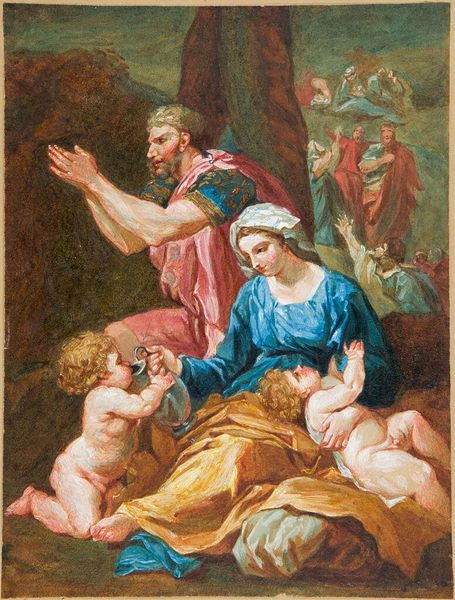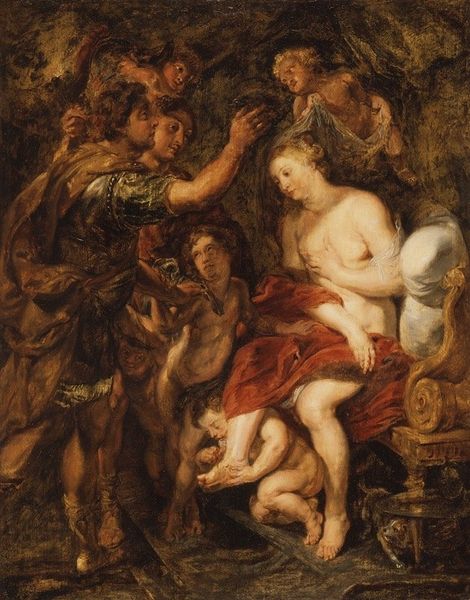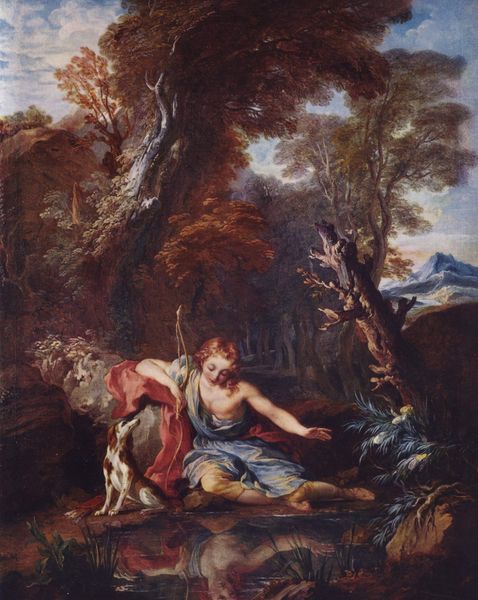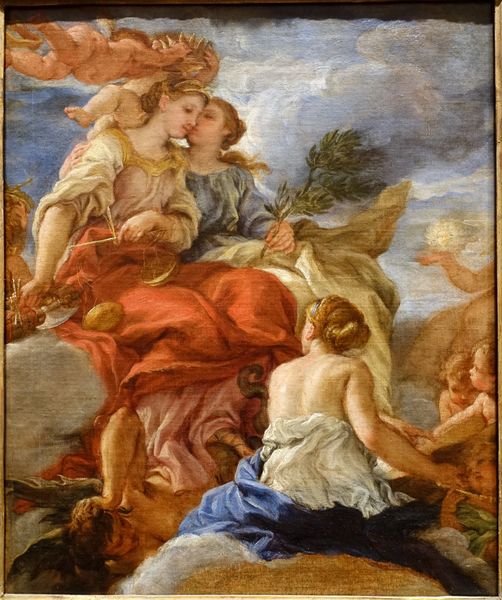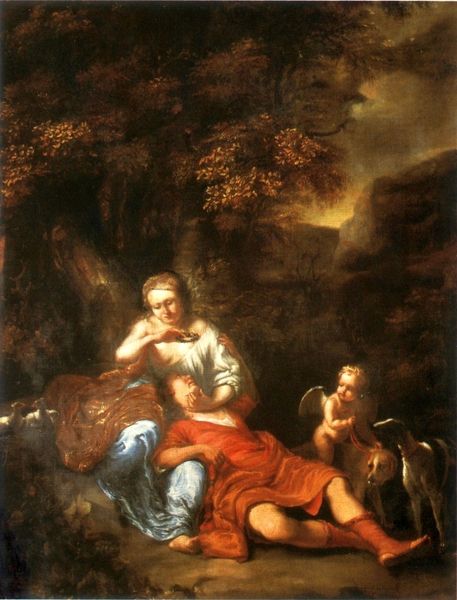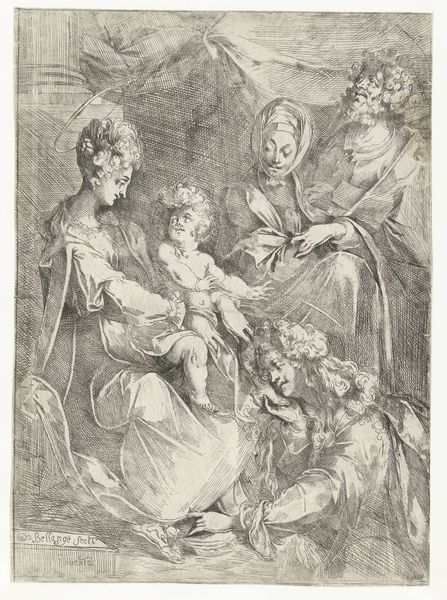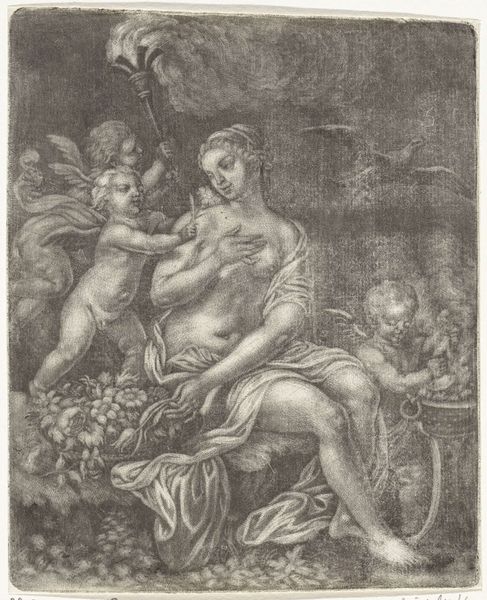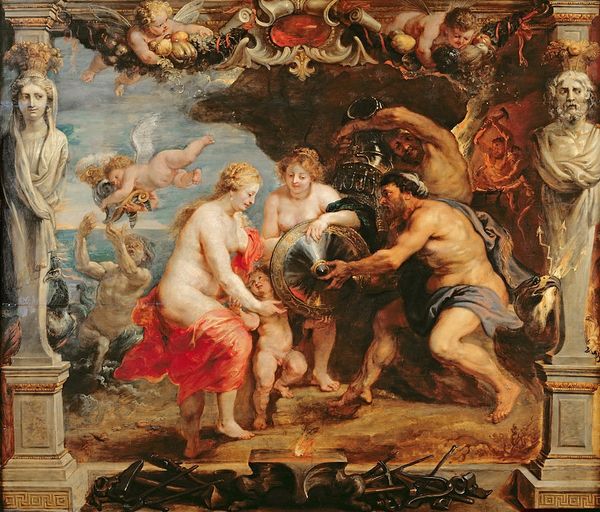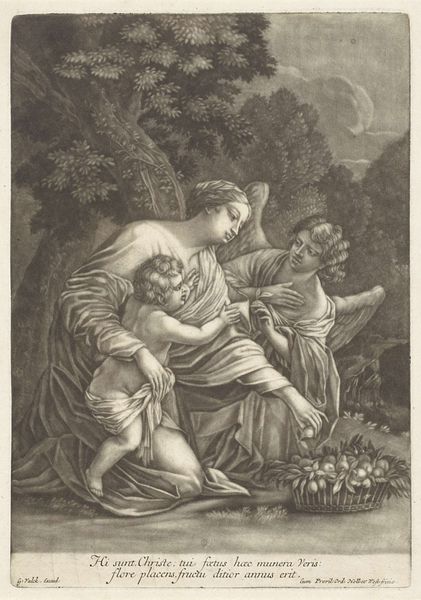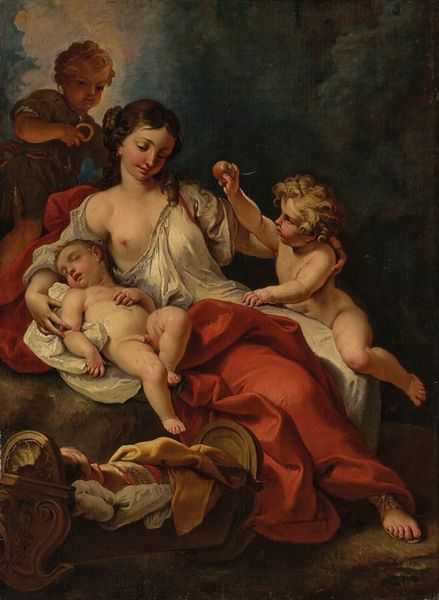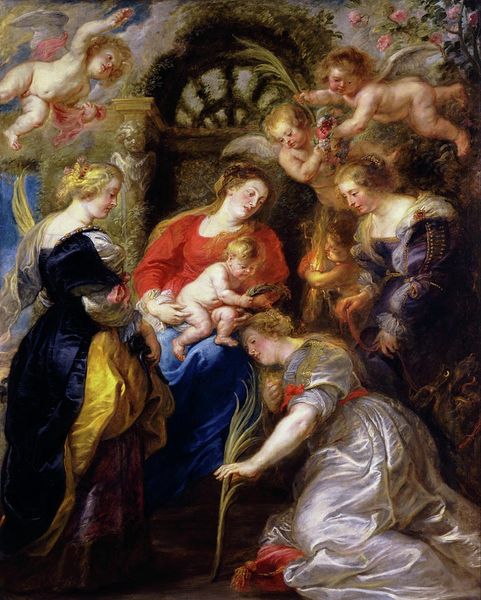
oil-paint
#
portrait
#
allegory
#
baroque
#
oil-paint
#
landscape
#
figuration
#
oil painting
#
genre-painting
Copyright: Public domain
Editor: We’re looking at "Abundance" by Peter Paul Rubens, an oil painting. The overwhelming impression is one of rich materiality – the fabrics, the fruits, even the light seems almost tangible. What strikes you about this piece? Curator: What fascinates me is how Rubens uses paint to represent not just objects, but the *making* of abundance. The overflowing cornucopia isn't simply presented, it's actively being offered. We need to consider the societal implications here: Who benefits from this abundance? Who labors to produce it? And how does Rubens's technique – the very act of layering paint – mirror this process of creation and distribution? Editor: That’s a fascinating point. I was just thinking about it as a straightforward celebration of plenty, but I see what you mean about the process being important too. Is he also making a statement about class, here? Curator: Perhaps. The painting itself is a commodity. Who was meant to consume it? These images served a purpose; displaying wealth and divine right during a time of widespread social inequality. Were these artworks truly celebrations or strategic distractions from the often harsh realities of laborers who never benefited from ‘abundance?’ The Baroque style often masked complex issues with overt visual splendor. Editor: So, you're suggesting the lusciousness might be hiding something deeper, like the exploitative labour behind it? Curator: Exactly! By considering the material conditions of the artwork – its patronage, its production – we can start to unpack these complexities. Think about where he got the paint from, the different stages it goes through until becoming what it is in front of us today, how he manipulates pigment and the implications of painting as a mode of cultural production within a mercantile context. It really makes you think differently. Editor: This makes so much more sense now. Thanks for shifting my understanding of what ‘Abundance’ can mean, beyond just a surface reading. Curator: And thanks to Rubens for making paintings that open up so many historical paths.
Comments
No comments
Be the first to comment and join the conversation on the ultimate creative platform.
